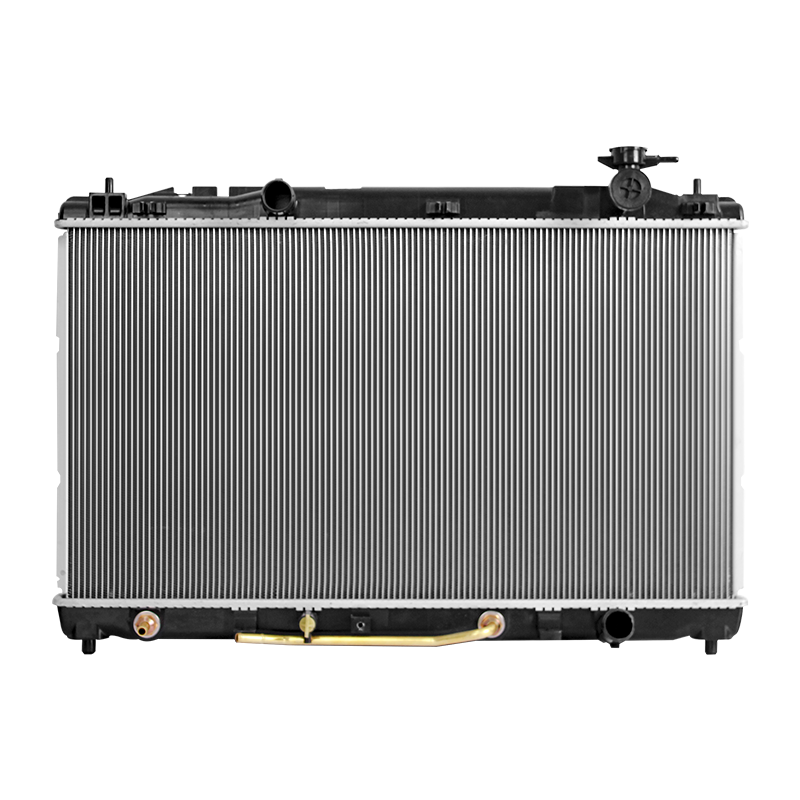2025-04-17
Improving the heat exchange efficiency of HVAC Auto Radiator requires multiple design dimensions, including optimizing the heat sink structure, improving the coolant flow channel design, enhancing air flow performance, and material selection. The following are specific improvement strategies and technical methods:
1. Heat sink design optimization
(1) Increasing the heat dissipation area
High-density fins: By increasing the number and density of heat sinks, the heat dissipation surface area is expanded, thereby improving the heat exchange efficiency.
Method: Use precision stamping or extrusion processes to manufacture thin and uniform heat sinks.
Corrugated or serrated design: Design the heat sink to be corrugated or serrated to increase the contact area between the air and the heat sink, while improving the air flow path.
(2) Surface treatment
Surface texturing: Use micromachining technology to create tiny grooves or rough textures on the surface of the heat sink to further increase the heat exchange area.
Coating technology: Coat the surface of the heat sink with high thermal conductivity materials (such as graphene coating) to enhance thermal conductivity.
2. Coolant flow channel optimization
(1) Flow channel layout
Multi-channel design: Design the coolant flow channel into a multi-branch structure to make the coolant distribution more uniform and avoid local overheating.
Method: Use computational fluid dynamics (CFD) simulation tools to optimize the flow channel layout.
Turbulence enhancement: Add spoilers or ribs in the flow channel to induce turbulence in the coolant, thereby improving the heat exchange efficiency.
(2) Flow channel size and shape
Reduce the flow channel size: Appropriately reduce the flow channel width and increase the coolant flow rate, thereby improving the convective heat transfer coefficient.
Asymmetric flow channel design: Design asymmetric flow channels based on the heat distribution characteristics of different areas to ensure better cooling of key areas.

3. Improvement of air flow performance
(1) Fan configuration
High-efficiency fan design: Select high-performance turbo fans or axial fans to increase air flow and reduce noise.
Variable wind speed control: Dynamically adjust the fan speed according to cooling needs to avoid unnecessary energy waste.
(2) Air flow path
Deflector design: Install deflectors around the heat sink to guide air to flow more evenly through the heat sink and reduce dead spots.
Aerodynamic optimization: Optimize the overall shape of the heat sink through CFD analysis to reduce air resistance and increase flow rate.
4. Material selection and modification
(1) High thermal conductivity materials
Aluminum alloy: Aluminum alloy with high thermal conductivity is preferred because of its light weight and excellent heat dissipation performance.
Copper alloy: For high heat load scenarios, copper alloy can be used as the core material. Although it is heavier, it has stronger thermal conductivity.
(2) Composite materials
The use of composite materials (such as metal-based composites or ceramic-based composites) combines high strength and high thermal conductivity to further improve heat dissipation performance.
5. Manufacturing process improvement
(1) Brazing technology
Vacuum brazing: The vacuum brazing process is used to ensure that the connection between the heat sink and the coolant pipe is tight and free of pores, thereby improving heat transfer efficiency.
Laser welding: Laser welding technology is used to achieve high-precision connection and reduce thermal resistance.
(2) Precision machining
Use high-precision stamping, extrusion or 3D printing technology to manufacture complex structures and ensure the geometric accuracy of heat sinks and flow channels.
Through scientific design and optimization, the heat exchange efficiency of HVAC automotive radiators can be significantly improved to meet the application requirements of high efficiency, durability and environmental protection, while adapting to the ever-changing market needs and technological trends.